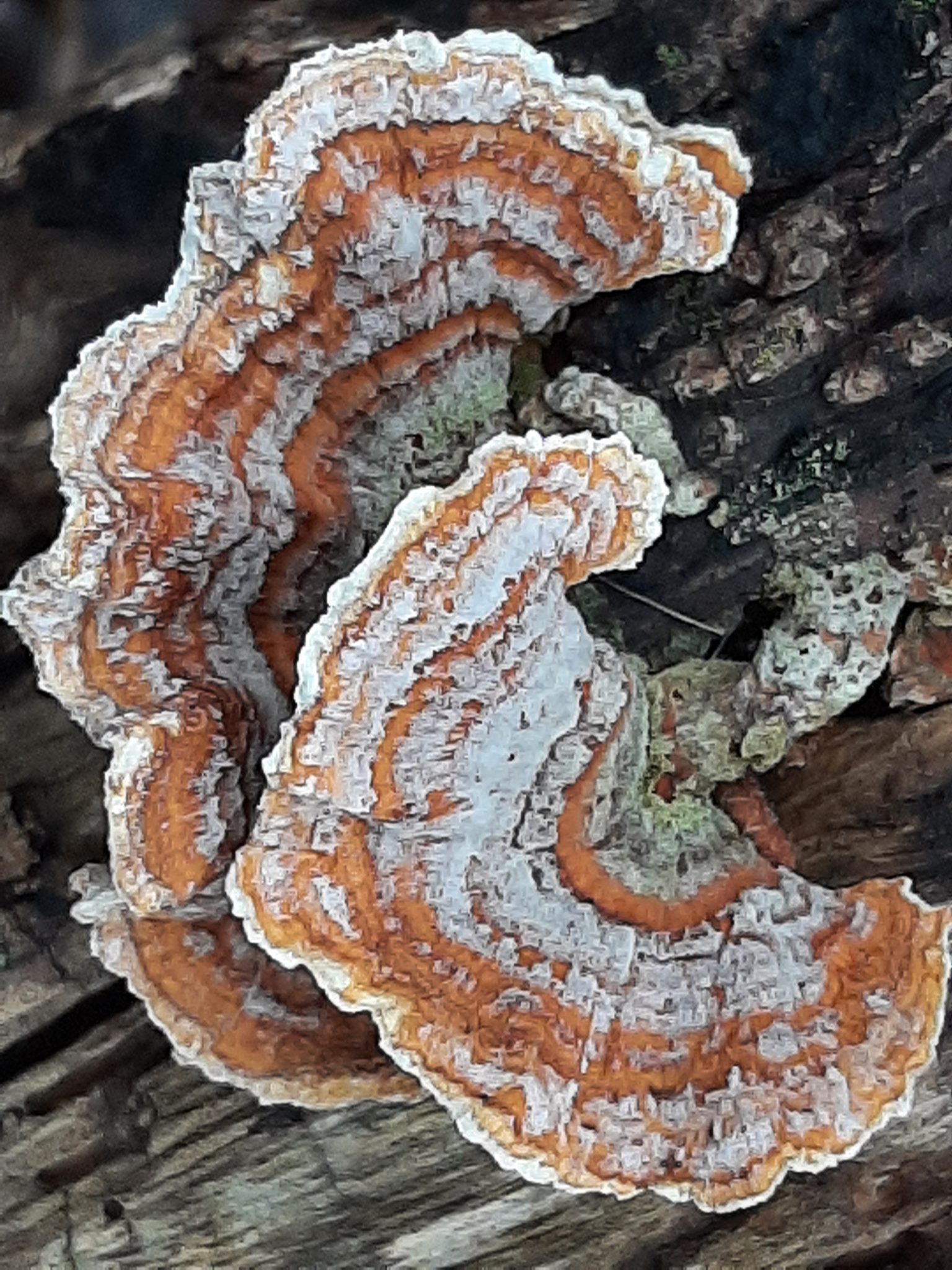 There stands a little man in the woods alone.
There stands a little man in the woods alone.
He wears a little mantle of velvet brown.
Say, who can the manikin be, standing there beneath the tree,
In the little mantle of velvet brown?
I remember singing this song in kindergarten—it’s a traditional folksong, German, I believe. It’s a riddle song—who is the mysterious man in the forest? And of course, it’s a mushroom.
I don’t know what songs kindergarteners are singing these days (none, probably, they’re too busy memorizing math facts and preparing for standardized testing) but I’ve always remembered this song. The feeling of mysteriousness this song eerily conveys has stayed with me. Mushrooms are indeed mysterious. One day they’re nowhere to be seen, and the next morning they magically appear out of the forest soil.
Mushrooms are just one type of the strange organisms called fungi. What is a fungus, anyway? For centuries, scientists weren’t quite sure. It looks sort of like a plant, but it eats like an animal. Fungus can’t make its own food from sunlight, air, and water like green plants can. Just as animals do, fungus has to feed on other things—living or dead.
A fungus starts out as a spore, a speck so tiny that it’s almost invisible. Carried on the wind, spores can travel far from the parent fungus. If they land in the right place, they germinate, sending out slender, rootlike threads. They grow into webs called mycelia, which look like a tangle of whitish yarn. Almost everywhere you walk, on grass, forest, or pavement, there’s a dense web of mycelia beneath your feet. They wind their way through soil, reach deep into rotting logs, poke into dead animals. And all that fungus is hungry.
When you eat a crunchy pretzel or a tough piece of meat, it goes into your stomach where acids and chemicals called enzymes soften and dissolve it, so you can absorb its nutrition into your body. Fungi digest their food first, then eat it afterwards. The mycelia ooze out powerful enzymes that can soften almost anything, even wood or bone. Once the meal is nice and mushy, the mycelia slurp up the nutrients.
Some fungi eat dead animals. Others prefer dead plants. Some are picky eaters—one type of fungus eats only pine cones, while a different species eats only pine needles. Some fungi eat other fungi. There are more than a million kinds of fungus, in all shapes and sizes and colors. One kind looks weirdly like a human hand reaching out of the ground, and it’s called “dead men’s fingers.” Others look like horse hoofs, or striped bird’s tails. Fungi excel at breaking down the tough bonds that hold the molecules of wood together. When fungus feeds on a rotting log, it turns the dead wood into crumbly, dark soil called humus, which is perfect for growing new trees.
Perhaps the most noticeable forms of fungi are the little men in the mantles of velvet brown, the umbrella-shaped mushrooms we see scattered across the forest floor after a rain. Mushrooms are just the fruiting part of the fungus. Think of those strands of yarn-like mycelia as the roots, trunk, and branches of an apple tree. The mushroom is the apple. Apples have seeds inside them, mushrooms have spores, which grow on the underside of the umbrella. But even if you get down on the ground and peek underneath the mushroom cap, you can’t see the spores, they’re too small.
Spores need damp soil to germinate. So the mycelia, down there under the ground, wait until things are nice and moist before sending up their spore-making machines. But the ground might dry up soon, so there’s no time to waste. That explains the mystery of why mushrooms will literally spring up overnight after a rain.
Keep an eye out for mushrooms on the trails this fall. You may not have enjoyed all the damp and wet we had this summer, but the little men of the forest have come out to enjoy the rain.





Recent Comments